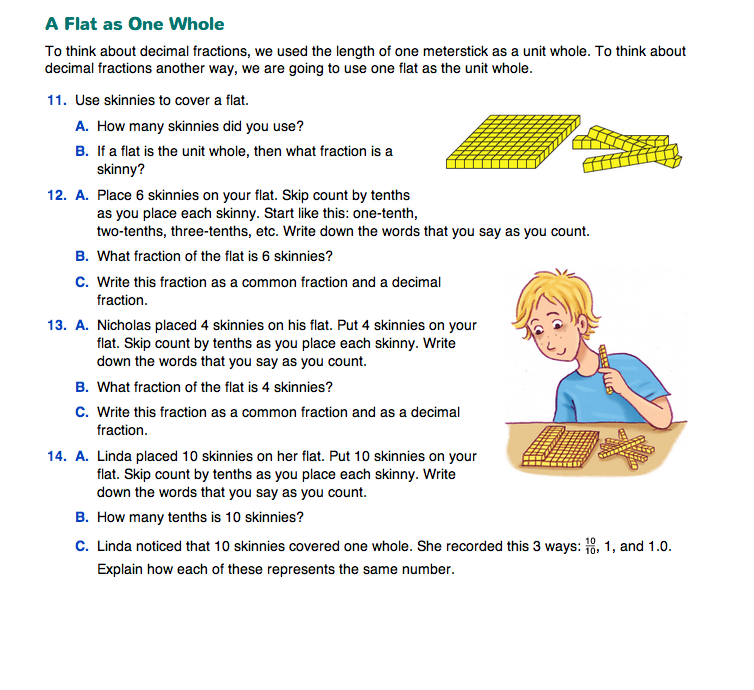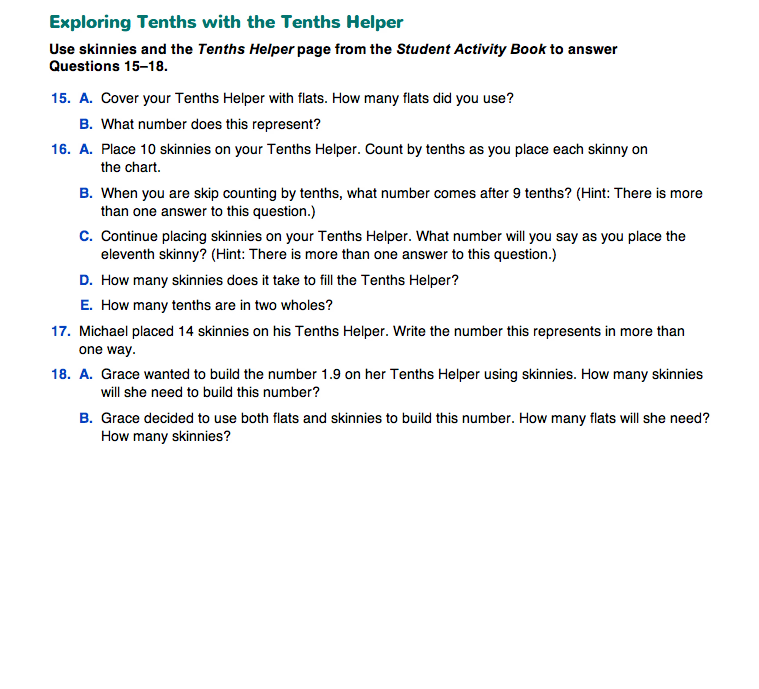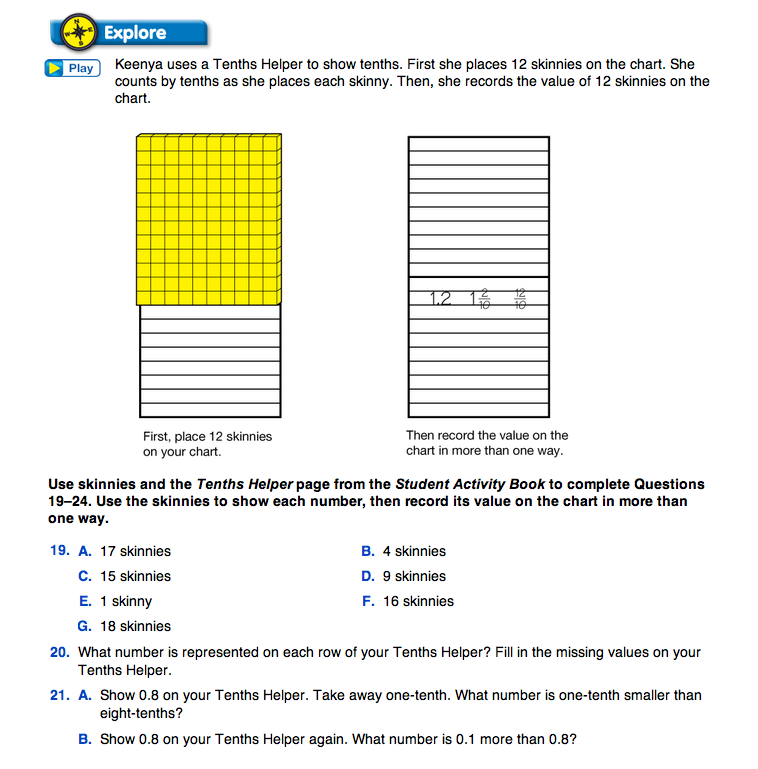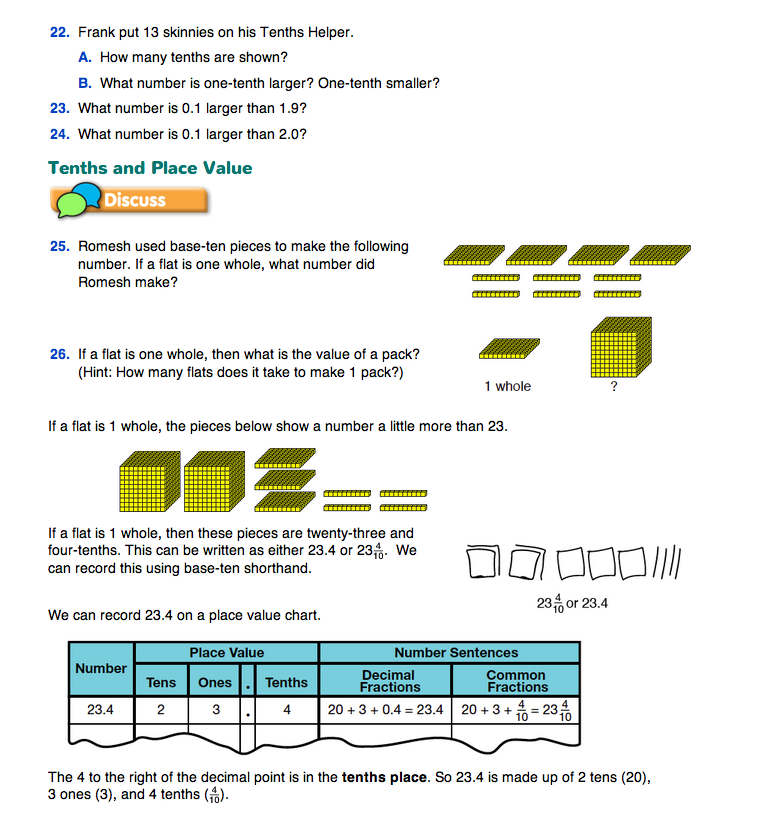Tenths
Est. Class Sessions: 2–3Developing the Lesson
Part 2. A Flat as One Whole
Redefine a Flat as One Whole. In Lesson 1 and in Part 1 of this lesson, students have represented decimals on a meterstick or number line model. One meterstick is one whole. In the A Flat as One Whole section of the Student Guide, students redefine the whole as a flat from a set of base-ten pieces. This area model is another useful representation. A skinny or a pack could also have been defined to be one whole, but they are less convenient for our purposes. Some students might think about the flat as a meterstick folded into tenths since both are the same as 10 skinnies. Throughout this part of the lesson, the unit whole will be a flat. With a flat as the unit whole, students will model decimals through hundredths.
Once the whole has been redefined as a flat, assign Questions 11–14 to partners. Students explore tenths and skip count by tenths as they build the different numbers. Having students skip count as they place their skinnies on the flat helps them to conceptualize tenths.
Students explore the different ways to write the numbers for the whole in Question 14. Review with students that 10/10 means that you have divided the whole into 10 equal pieces and all ten pieces are being considered. 1.0 means that you have 1 whole and 0 tenths. Both of these are different ways of writing 1 whole.
Exploring Tenths with the Tenths Helper. The Tenths Helper page in the Student Activity Book is introduced in Questions 15–18 to help students visualize one whole when working with the tenths. See Figure 1. Students use the chart to build 1 whole and 2 wholes using skinnies. In Question 16, students model tenths by placing skinnies on the Tenths Helper page. After students have had a chance to explore this model with Questions 15–18, model the use of this chart using a class display and base-ten pieces.
Ask students to skip count by tenths as you place 13 skinnies on a display of the Tenths Helper page and ask:
Use the vignette before Question 19 in the Student Guide to model how Keenya used the Tenths Helper to name and write decimal numbers using the appropriate display and skinnies. Ask pairs to practice representing decimals by answering Questions 19–24.
In Questions 19–20, students use skinnies and the Tenths Helper chart to name and write numbers between 0 and 2 using decimal fractions and common fractions. In Questions 21–24, students name numbers that are a tenth larger or smaller than a number. Experiences like these help students generalize patterns in the number notation and gain number sense of a tenth.
Assign the Homework section of the Student Guide to provide practice with estimating in meters.

















